When it comes to pretty much any disaster scenario save a nuclear winter or EMP burst, solar power is THE direction to look in for your power-producing needs. Thus, bugging out by vehicle could necessitate the need for bug out solar panels, as important as a tricked out communication system. Also see my review of the associated Rockpals Portable Power Station to supplement these panels.
Simplicity, lack of support resources, and reliability are the hallmarks of solar power for survivalists and preppers. Burning fossil or naturally-sourced fuels or burning calories isn’t required to generate juice with solar power; you plug in your solar panels, leave them in the sun, and go about your business while the sun’s bombarding photons do the work for you. It’s a brilliant system (pun intended) and it needs to be on your list of “must have” preps, especially if electronic devices are integral with your plans.
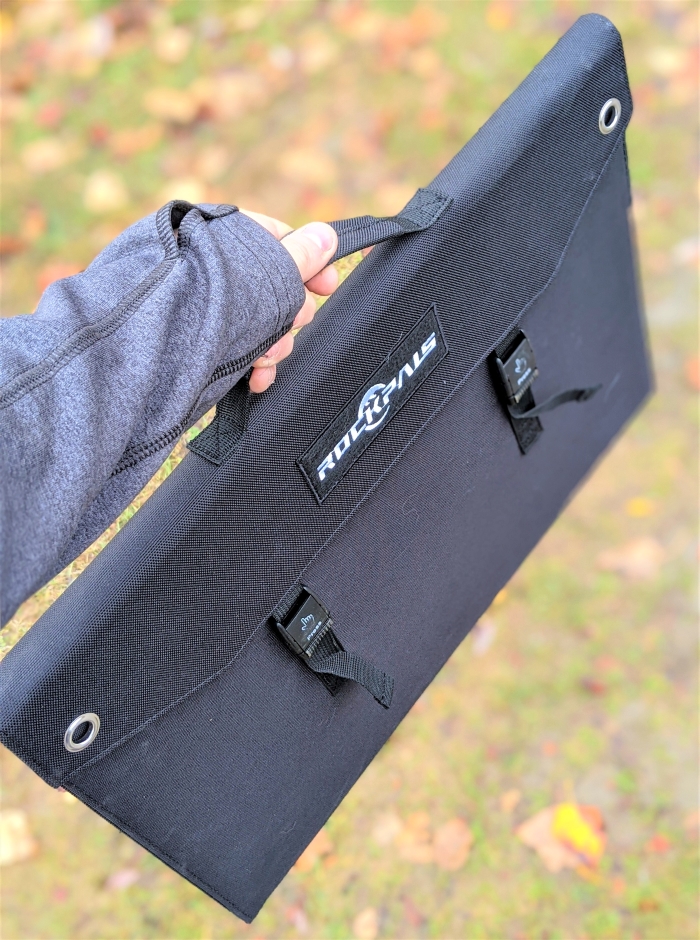
While multi-function devices that have integral solar panels like the really pretty cool gear from Biolite and HybridLight should absolutely be considered for entry-level setups or bug out bags, larger, more capable fixed or semi-fixed panels capable of some serious output are needed if you want to step up your preparedness game.
While the innovative Biolite Solarhome 620 kit and its little 6 watt panel is a good place to start for people who just want to check the “Solar Power” box off their preps list, a larger panel system like our featured Rockpals 100 watt folding solar panel is the way to prove that you’re getting starting to get serious about solar.
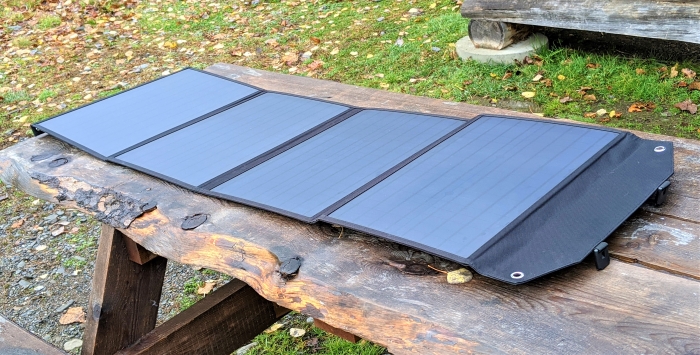
Rockpals 100W Solar Panel Details
According to their “About Us” Page, Rockpals is a California-based company of outdoorsmen for outdoorsmen, providing reasonably priced power-providing commodities to the masses. Their product breadth is commendable, focusing mostly on products that provide the end user with electricity: solar panels, high-volume portable power stations, and inverter generators.
However, it does look like they dip their toes into the waters of related products, offering a small nifty-looking camping lantern, and a small powered RV refrigerator. Kudos to Rockpals for keeping to a nucleus product line; other companies you might find online might have power stations or solar panels, but they also offer goofy unrelated gear like running shoes and swim goggles. Rockpals sticks to what they know, and it looks like they know what works.
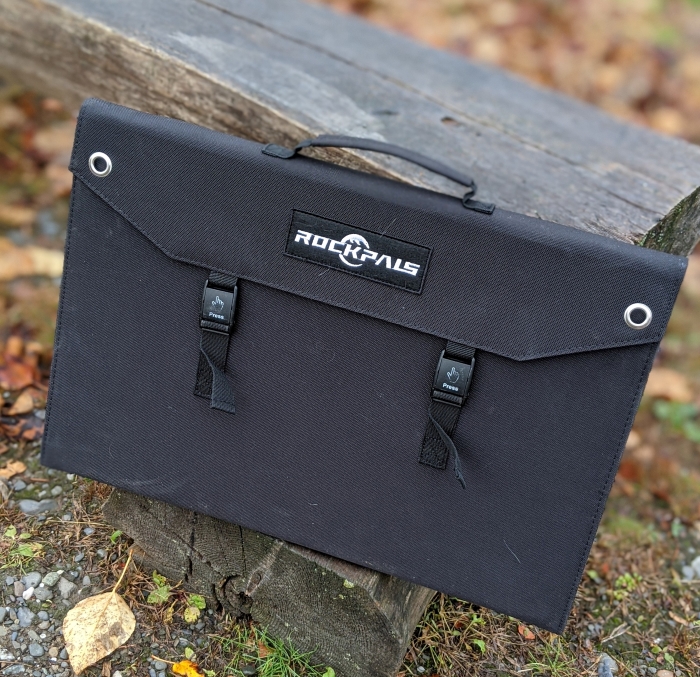
The Rockpals 100 Watt solar panel is a nifty little marvel that combines useful output with utter portability. Folding up into a handy package that’s about the size of a narrow briefcase, the Rockpals solar panel can be tucked into unobtrusive spaces, absorbing minimal amounts of room in your car, shed, or prep storage area. Opened up and spread out for use, the panel system spans almost five and a half feet long by twenty and a half inches wide.
Folding the system up for storage or packing brings the whole shebang down to an easily handled package that dimensions out at 20 ½” long x 14 ½” wide x 2 ½” thick. The integral carrying handle makes moving the panel’s approximately 11 pound bulk around an easy proposition. The rough-woven oxford cloth nylon exterior covering is durable and water-resistant.
The outside of the unit also sports a large zip-up pouch on one side, perfect for storing instructions, small devices or tablets, cords, and charging adapters. Two svelte plastic clips and nylon straps keep the whole works buckled together while folded, and reinforced grommets in the corners of the case round out the visible exterior attributes.
Adapt(er) and Overcome
Speaking of adapters, the Rockpals 100 Watt Foldable Solar Panel Charger is provided with a suite of different barrel DC adapters to ensure the panel is compatible with a majority of portable power stations; the website and included instructions specifically mention the Suaoki 150Wh, GoalZero Yeti 150Wh and 400Wh, Jackery Explorer 160 Wh and 240 Wh, and ENKEEO 155Wh portable power stations and being compatible with the solar panel.
However, there are nine adapters provided with the Rockpals solar panel, so it’s a safe bet that it will work with others. Just be sure that the Rockpals’ 18 volt, 5.55 amps maximum output is compatible with your power station.
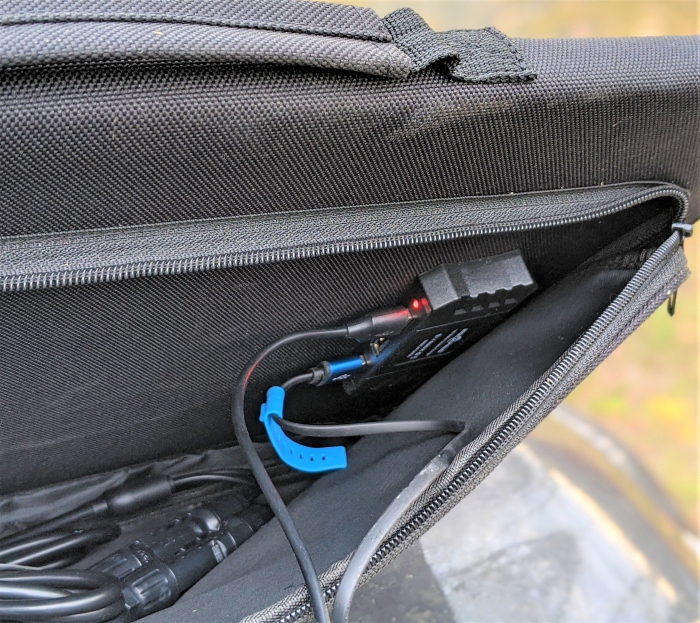
To increase the utility of the Rockpals solar panel, three USB outputs are provided as well for direct device charging applications. There are a pair of USB 2.0 ports and a third USB QC3.0 port for devices capable of quick charging, with the USB 3.0 port designated with a red interior. A red LED on the USB panel glows red to show power to the ports.
There is also an almost ten-foot-long DC cord hard-wired into the Rockpals panel that accepts the provided adapters; this would be used for running current directly into a larger power bank system to charge them up via the solar panels.
The Rockpals Solar Panels in Action
I brought my Rockpals 100W Solar Panels with me on a bird hunting trip in Northern Maine, intent on testing it out by zip-tying the unfolded panel to my 4Runner’s roof rack system, and using the solar panels to charge devices as I went about my driving and scouting.
However, the best laid plans of mice and men often go awry; the weather on my entire trip was a rainy, muddy mess – except, of course, for my trip back home. I was able to give the panels a good workout on a lunch and bathroom break, as I pulled over by the Seboomook Dam for lunch and to admire the scenery.
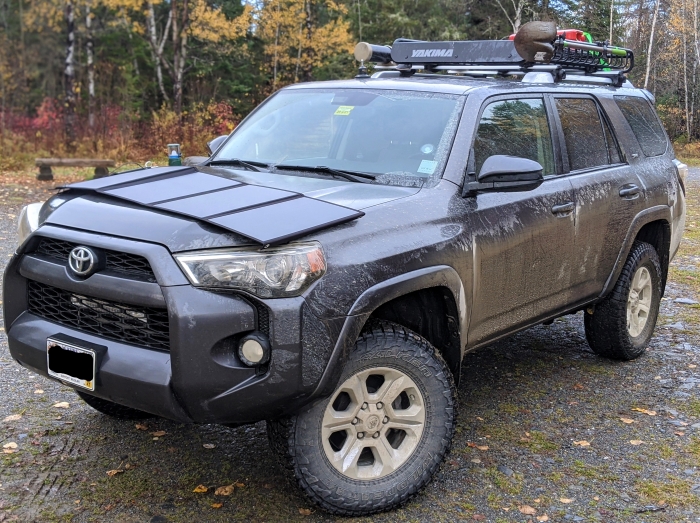
I unbuckled the Rockpals casing, and unfurled the four monocrystalline solar panels out flat across the hood of my truck. There was a decent amount of direct sunlight available at the time, and I took the opportunity to top off my portable power bank and charge up a lantern I’d been testing as well.
The power bank got plugged into the USB 3.0 quick-charge port, and the lantern got some 2.0 port love. Both units responded immediately that they were accepting a charge, so I let the solar panel work its magic while I relaxed and broke out a ham and cheese and explored the area.
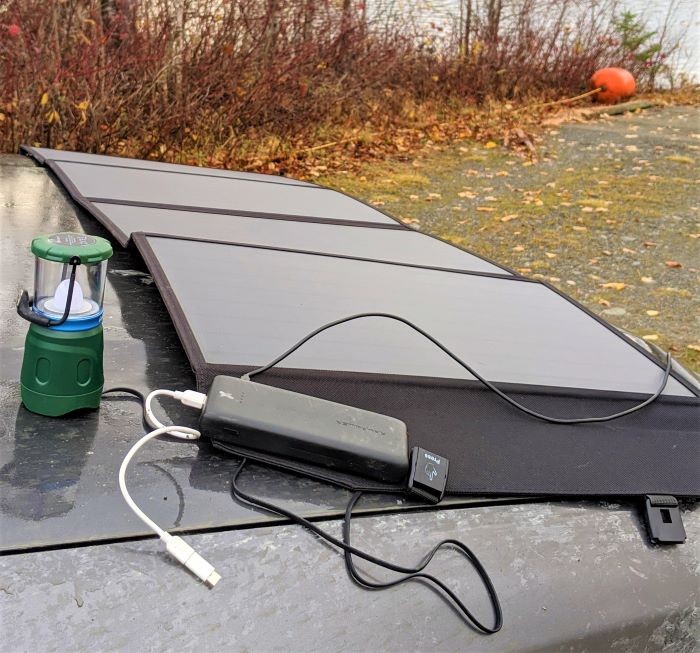
I putzed around for a good hour and a quarter before I decided it was time to pack up and continue the journey. I checked on my devices, and while they didn’t have specific battery percentage indicators, the 22,000 mAh power bank showed a half charge (up from roughly a charter charge) and the Olight Olantern went from dead (no battery power) to showing a “yellow” charge level, which is anywhere from 30-70%. Satisfied with these positive (though admittedly vague) results, I trekked home to test the panels under better conditions.
Further Testing of the Solar Panels
A couple days later, I decided to try the Rockpals Solar Panels with every rechargeable device I could find to plug into the system. As I am a bit shy on portable power stations to test compatibility, all I could do was utilize the USB ports the best I could. I did find the barrel adapter that fit my Dell laptop and plugged it in, but the two systems were incompatible and no charging occurred with the computer.
However, I’m happy to report that pretty much anything that charged via USB port, from Apple Watches to cell phones (both Android and Apple) to tablets to Olight flashlights and lanterns – they all took a charge with the Rockpals panels. My son’s Samsung Galaxy tablet went from 2% charge to 89% charge in an afternoon while I worked with intermittent, though usually direct, sunlight.
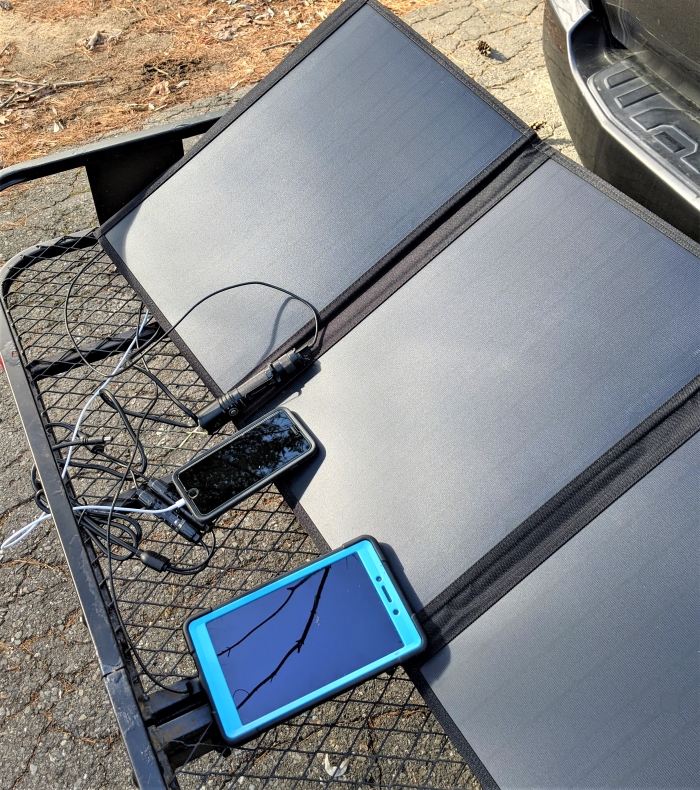
The Rockpals system does have circuitry that recognizes the power requirements for the device that it’s paired with – so if your cellphone is older and only accepts a 1 amp charge, that’s all the Rockpals 100W Solar Panel will provide.
Charging times varied depending on the amount of direct sunlight I had available, and the power going into the devices varied accordingly. Rockpals states that their monocrystalline solar panels convert up to 23.5% of direct solar energy into output power – which is substantially more efficient than other polysilicon panels, which are around 13-15% percent conversion. This means that if you have good, bright sunlight on the panels, you’ll have far more output available to you than other panels can muster in equivalent situations.
According to Rockpals’ instructional downloads for their 330Wh portable power station, the 100W solar panel should theoretically be able to charge the entire power station in 5-8 hours under optimal lighting conditions. That’s some pretty serious output for solar panels – The Rockpals 330Wh power station has 78,000 milli-Amp hours of juice available in its batteries – that’s about 28 charges of an iPhone 12 Pro!
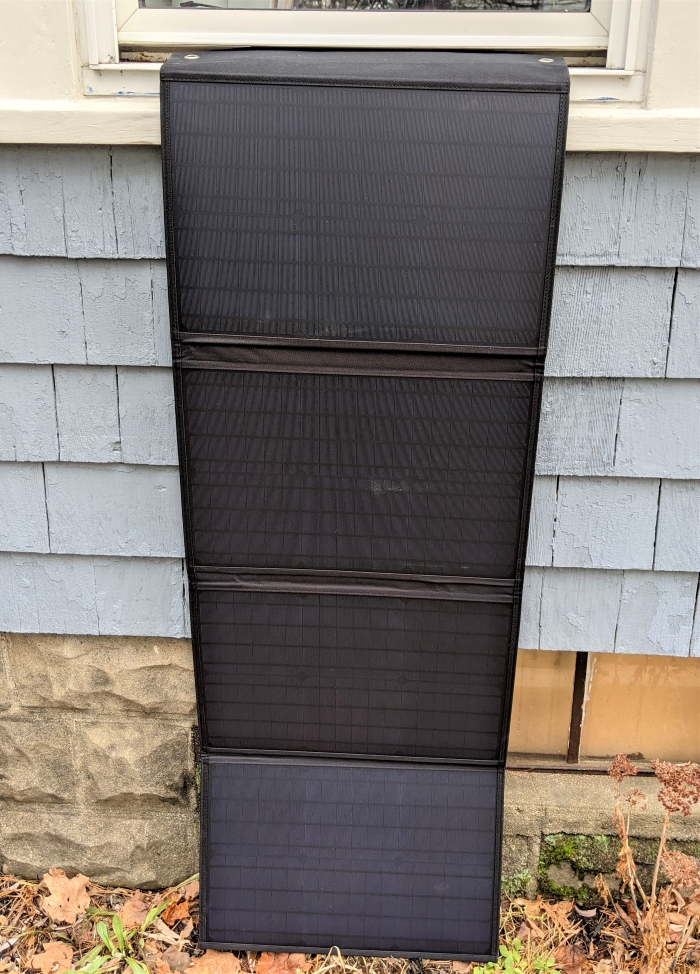
I did notice that when the temperature dropped and I was charging, the devices themselves limited the amount of power they would accept due to the cold; I was charging an iPhone in 40° temps and the phone itself backed down the charge speed. I then hung the Rockpals Solar Panel from my window and ran the cords inside the house where it was warmer, and once the device came up to room temp, everything worked fine.
A light drizzle that fell on the faces of the solar panels didn’t shut operations down due to Rockpals’ weatherproofing measures, but I would definitely recommend keeping the panels on an angle for water to run off the unit and not pond up to deflect or change the amount of incoming solar radiation.
Quick note: the USB port panel and the hardwire DC panel are not waterproofed, so be sure to protect accordingly.
Bug Out Solar Panels for Preppers and Outdoorsy Types
While the panel itself is superb for charging multiple devices on the go, this isn’t a setup that you’ll be hanging off a backpack to charge while you hike. Rather, where the Rockpals 100W Solar Panel system would really shine is powering a small shed, bug-out location, ice fishing shack, or something similar. Using it as alternative power source for bugging out, precisely as bug out solar panels, is also an application if bugging out by vehicle. Also. this smaller solar setup would be phenomenal as a backup to a generator to keep devices charged in case of a natural disaster knocking power out at your home.
Combine these solar panels with a stout, high-capacity power station and you’ll have plenty of power to charge and run multiple devices, a small TV and a gaming console, even a small refrigerator, lights, or fans.
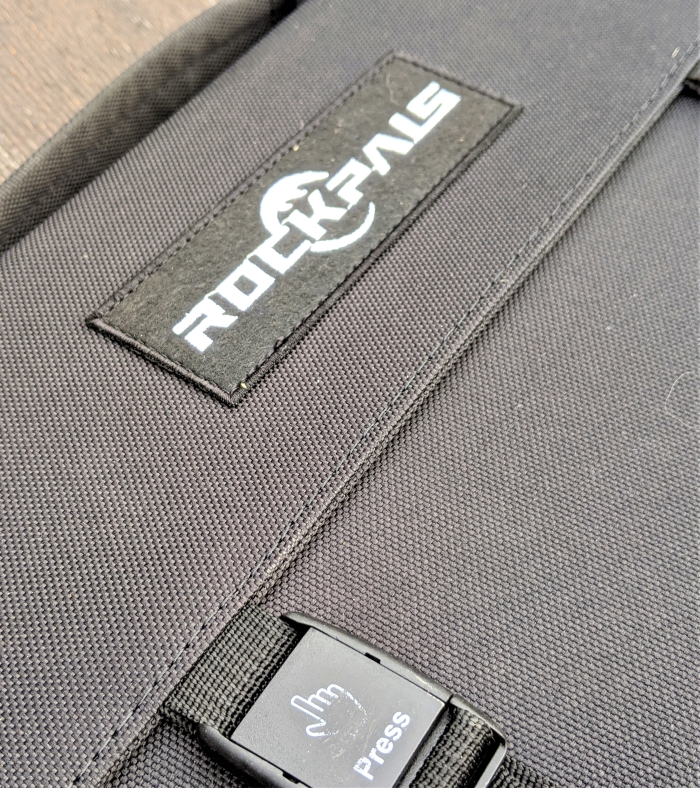
Optimally for home/BOL use, or even going off-grid in a van or RV, one considering solar power should buy the biggest baddest power station they can afford – for example Rockpals’ own 350W or 500W station, and plan a beneficial location in the house. Then, determine the best route for the wires (remember, you have less than ten feet or cable to work with here), and lay out the solar panel in an area with clear exposure to the sun.
In northern hemispheres like I am in the United States, the solar panels set up facing south will generally give you the best exposure as the sun courses across the sky – however, if you have time, you can absolutely pay attention to the situation and adjust the panels’ angles accordingly to maximize the output. The panel can be hung via integral grommets on nails or laid out on the ground or on a suitable location. When the sun sets, pull the panel back inside to avoid damage, condensation, and rain/moisture damage.
For overlanding or camping where devices are essential, the Rockpals 100W solar panel takes up minimal room in vehicles, but opens up to provide a multitude of power sources on the go. For the price (about $200), the value is extraordinary when you consider that so much of our lives are centered around little devices that require power – and this sort of stow-away, portable high-output power is invaluable – especially when you remember that solar power requires no fuels to obtain that power. Free power for the life of the panel as long as you take care of it accordingly.
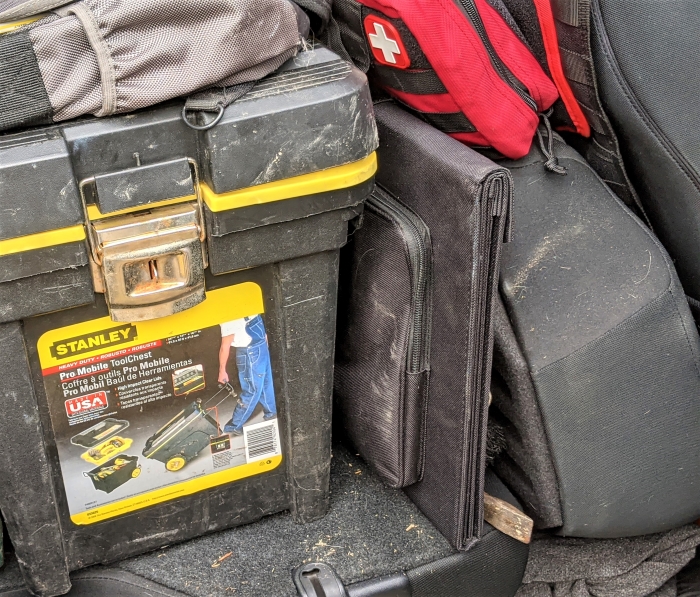
As I stated in the intro, about the only application these Rockpals 100W Solar Panels would be useless in is post-EMP burst (there is vital circuitry involved) or during a sun-blocking nuclear winter. However, the likelihood is FAR GREATER of needing your cellphone charged up for communications after a hurricane knocks out power for days, or perhaps providing power to watch the game on a small TV while enjoying a day of ice fishing.
The perceived uses are endless, and when combined with a good power station, you’re looking at being very comfortable indeed once the power goes out – all for about a $400-$500 chunk of change. A great return on investment, especially if you have kids that entertain themselves on their tablets or cellphones, or if you require your laptop to keep working when the lights go out or need to access your bug out USB. It’s really a whole bunch of win, and Rockpals can make it happen for you.
I predict a long-term review in the future after I get a worthy power station to pair with the panels; keep your eye out!
Do you run solar? What is your current setup? Sound off in the comments below!
